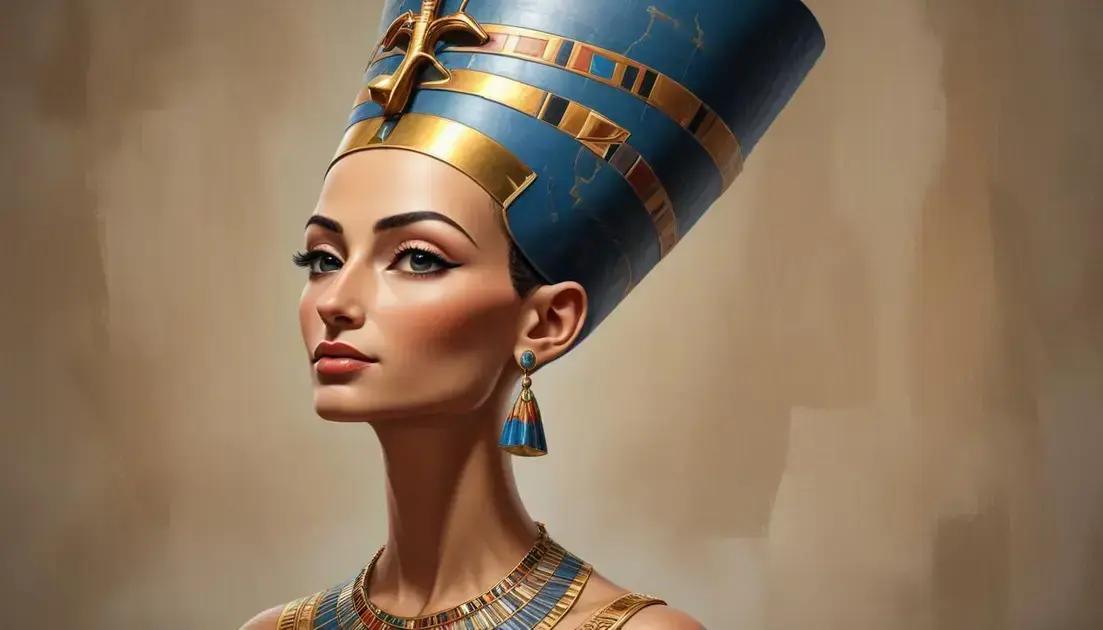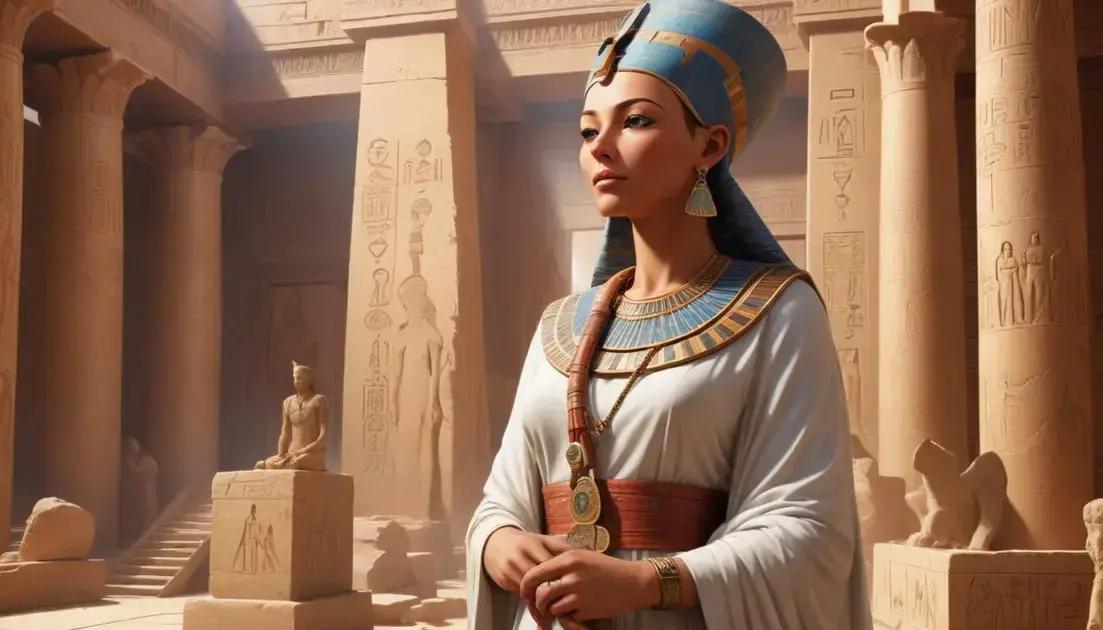
Nefertiti: Beauty, Power and Religion in Ancient Egypt
Nefertiti and Akhenaton’s reign in ancient Egypt marked a significant shift in culture and religion, characterized by the worship of Aten, the sun god. Nefertiti emerged as a powerful figure, symbolizing beauty and strength, while their artistic representation focused on family life and naturalism. Their legacy continues to influence modern culture, showcasing the impact of their bold religious changes, which prompted deep discussions on monotheism and shaped Egyptian history.
Nefertiti is not just a name but a powerful symbol of beauty and strength in ancient history. Her influence reached far and wide, shaping the religious landscape of Egypt.
The Life of Nefertiti
Nefertiti was a queen of ancient Egypt, renowned for her beauty and power. She lived over 3,000 years ago. Her full name was Nefertiti, which means “the beautiful one has come.” She married Pharaoh Akhenaton and played a crucial role in his reign.
Together, they changed many traditions. They introduced a new form of worship focusing on one god, Aten, the sun disk. This was a significant shift in Egyptian beliefs.
Nefertiti was not just a figurehead. She actively participated in political and religious matters. Many statues and paintings show her alongside Akhenaton, highlighting her importance.
Her beauty is often captured in art. The famous bust of Nefertiti, discovered in 1912, showcases her stunning features. This artifact remains one of the most famous pieces of ancient art.
Despite her fame, much of her life remains a mystery. Historians debate her influence and status. Some even think she may have ruled as a pharaoh after Akhenaton’s death.
Nefertiti’s story continues to fascinate people today. She symbolizes strength and power, leaving a lasting legacy in ancient history.
Nefertiti and Akhenaton’s Reign
Nefertiti and Akhenaton ruled ancient Egypt during a time of great change. They introduced a new form of worship centered around the sun god Aten. This was different from the traditional Egyptian beliefs that honored many gods.
During their reign, they moved the capital from Thebes to Amarna. This new city was dedicated to Aten. It became a center for art, culture, and religion. Nefertiti played a key role in promoting this new faith.
Art from this period shows a more naturalistic style. The couple is often depicted together, showing their strong partnership. They are shown embracing their children, highlighting a family-focused approach.
Nefertiti was not just a queen; she acted as a co-regent with Akhenaton. This means she had power and influence alongside him. Their collaboration helped to make changes in society.
Their reign was also marked by conflict. Traditional priests resisted the shift to Aten worship. This led to tensions and challenges for the royal family. However, their dedication to their beliefs is evident in their monuments and temples.
Nefertiti and Akhenaton’s reign was a unique chapter in ancient Egypt’s history. Their legacy continues to inspire curiosity and admiration today.
Religious Revolution
The religious revolution during Nefertiti and Akhenaton’s reign changed Egypt forever. They promoted the worship of one god, Aten, the sun disc. This was a big shift from the usual beliefs in many gods.
Nefertiti played an important role in this new religion. She was seen as a priestess and helped lead ceremonies. Their family was often depicted in art, connecting them to Aten.
This new belief system took away power from traditional priests. Many people were upset by this change. The priests had long been in charge of temples and rituals. They did not easily accept the new way of worship.
Art from this time shows Akhenaton, Nefertiti, and their children worshiping Aten. The images are warm and family-oriented, unlike past art that often showed distant gods.
The couple built new temples and dedicated them to Aten. These buildings had open-air designs, allowing sunlight to shine in. This symbolized their connection to the sun god.
While the revolution was bold, it faced strong opposition. After Akhenaton’s death, many returned to the old ways of worship. The temples of Aten were destroyed, and traditional gods regained their followers.
Despite these challenges, the religious revolution marked a unique time in history. It showed how powerful faith could be in shaping society.
Cultural Impact and Legacy
The cultural impact of Nefertiti and Akhenaton’s reign was enormous. Their focus on Aten worship brought new ideas to art, religion, and society. This changed how people viewed their gods and their daily lives.
Art during this time became more natural and personal. Artists began portraying the royal family in a more human way. Nefertiti and Akhenaton were often shown caring for their children. This was different from earlier art that showed rulers as distant figures.
They also encouraged a new style of architecture. Temples dedicated to Aten were open and filled with light. This design symbolized their belief in the sun god’s power.
Nefertiti’s legacy continues to inspire modern culture. Many see her as a symbol of feminine strength and beauty. The famous bust of Nefertiti remains an icon of ancient Egypt.
Even today, people are fascinated by her life and story. She has appeared in movies, books, and art. This shows how her influence has lasted through the centuries.
The couple’s shift to monotheism sparked debates among scholars. Some see it as a progressive push for ancient Egypt, while others view it as a short-lived trend.
The cultural impact of Nefertiti and Akhenaton reminds us of the power of belief. Their reign greatly shaped Egypt’s history and left a lasting legacy.
Conclusion
In conclusion, the reign of Nefertiti and Akhenaton represents a unique chapter in ancient history. Their religious revolution, cultural changes, and focus on family have left a lasting impact on Egypt and beyond. Nefertiti stands out as a symbol of beauty and strength, while their shift to Aten worship marked bold steps in religious thought.
Their legacy continues to inspire curiosity and admiration in modern culture. From art to literature, their story resonates with many. This shows the power of their influence, reminding us that history shapes our understanding of tradition and belief.
Ultimately, Nefertiti and Akhenaton have taught us that change can be profound and that cultural heritage is vital to human history. Exploring their lives gives us insight into the past and inspires us to think about the future.


